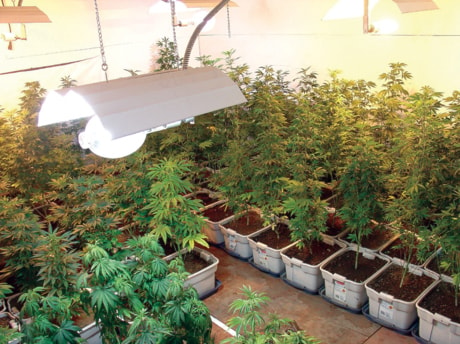STONY PLAIN — On the day four Mounties were shot to death inside a Quonset hut, RCMP Const. Garrett Hoogestraat was the officer outside who called for help.
“We’ve got shots fired and we’ve got a member down!” Hoogestraat, out of breath, can be heard saying on a tape of his 911 call, which was played Thursday at a fatality inquiry.
“Do you need an ambulance?” asked the female 911 operator.
“I believe so. We just got here. The members went into the garage (Quonset) and there were shots fired.”
“I’ll get backup heading out there,” said the operator. “We know where it is.”
“I’m out of the vehicle,” said Hoogestraat. “We’ve got .. members who went into the garage. Const. (Steve) Vigor and myself are outside the garage and I don’t see any other members coming out.
“Numerous shots fired. Numerous shots fired!”
The tape was played during Hoogestraat’s appearance at the inquiry into the March 3, 2005, shooting deaths of RCMP constables Leo Johnston, Brock Myrol, Anthony Gordon and Peter Schiemann.
Such inquiries probe the circumstances of death and determine if there are lessons to be learned.
The four Mounties had been working at James Roszko’s farm that morning when the 46-year-old, who had somehow managed to sneak back into the Quonset under cover of darkness, surprised them and shot them many times over with a semi-automatic military assault rifle.
The four had been helping with the seizure of 280 marijuana plants and stolen car parts found inside the building. Roszko had fled the scene the day before and had not been seen since.
Just before 10 a.m. Vigor and Hoogestraat, with the RCMP’s auto-theft team, had arrived to catalogue and seize the car parts.
They were at the far end on the outside of the cavernous, semi-circular metal shed. Hoogestraat was putting on his work overalls while Vigor was nearby in their truck making notes.
He told court he remembers the four officers walking past him around the corner and into the hut.
“That’s the last I saw of them,” Hoogestraat said.
“Then we heard banging. It’s hard to describe. It was a tinny sound. We thought they were banging inside the hut. It had a tinny ring to it.
“We then recognized it as gunfire. And we could hear screaming.”
He said he and Vigor looked at each other, drew their pistols and ran along the side of the hut toward the front doors.
Vigor, who was also a tactical team officer, ordered Hoogestraat back. “Call it in!” he said.
Hoogestraat said he went back to the truck and called 911 on his cellphone. He said he never heard the gunfight between Vigor and Roszko, which began when Roszko, not expecting to see the police officer, came out the door.
Roszko fired twice and missed, but Vigor got him — once in the hand, once in the leg. Roszko managed to get back into the hut, where he put the barrel of the gun to his heart and pulled the trigger.
Outside, Hoogestraat gunned the truck to the front, wheels spinning in the wet, snowy grass, to give them cover and to make sure no one exited the building. Vigor told him he’d shot at Roszko but wasn’t sure he’d hit him.
Inside, there was silence, except for the occasional “whump, whump” of a compressor. Chatter on the radios strapped to the dead officers echoed inside.
Hoogestraat got on his radio and told Roszko to give himself up.
No response.
He tried again. No response.
All he could hear was his own voice drifting back from the hut.
He could see a bit of Gordon.
“I could see a member’s legs in the door(way),” said Hoogestraat, his voice catching briefly.
“Do you want to take a moment?” asked Crown lawyer Alan Meikle.
Hoogestraat took a breath. “No, I’m good.”
About five hours later, after a video-robot was sent in to confirm Roszko was dead, the bodies were recovered. For Hoogestraat, it was a nightmarish end to an agonizing wait.
On a police tape played in court he told a fellow officer: “We just wanted to go in and get the guys out.”
Earlier Thursday, the inquiry heard from Sgt. Lorne Adamitz, who works on the RCMP green team investigating grow ops.
He was called out that night to help seize all the pot plants.
He told court that while 280 plants is not a large grow-op, Roszko appeared to be a dealer and was very dedicated.
In the Quonset and in Roszko’s trailer residence, they found nurturing tubs, watering systems, height-adjustable lights and reflective walls to maximize light. Immaculately kept journals were found detailing the history and every blot and blemish on every pot plant.
While Adamitz didn’t know Roszko, he suggested a possible motive for Roszko’s rage that day as police scooped his plants, his equipment and his livelihood.
“I can say this,” said Adamitz. “One of the best ways to interview a grow operator is to get him to brag about the plants. They have so much pride in them.
“A lot of them will tell you freely (the marijuana plants) are their babies.”
